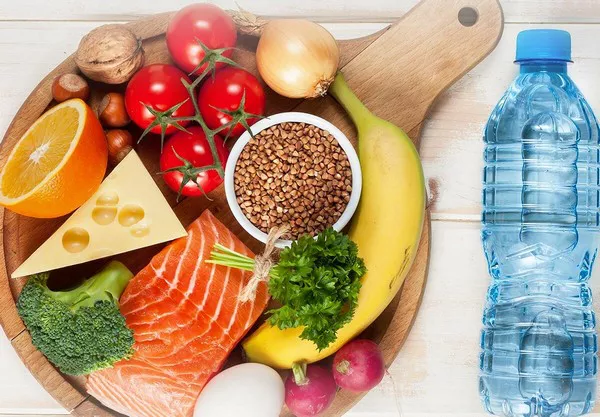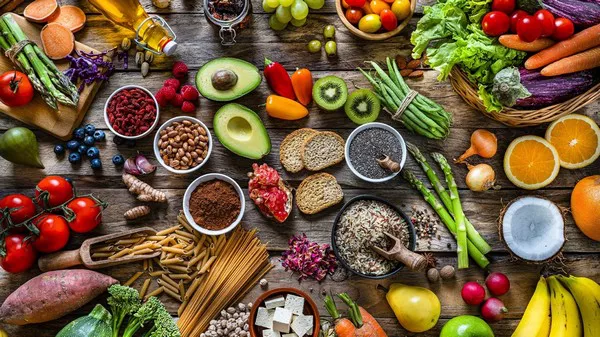In the realm of fitness and wellness, fat loss has been a perennial focus for individuals seeking to attain their desired body composition. While cardio exercises have traditionally been favored for their calorie-burning potential, strength training has emerged as a powerhouse contender in the pursuit of fat loss. The amalgamation of muscle-building and metabolic benefits inherent in strength training renders it an essential component of any comprehensive fat loss program.
SEE ALSO: What to Eat When Strength Training to Lose Weight: A Comprehensive Guide
The Science Behind Fat Loss and Strength Training
To comprehend the efficacy of strength training for fat loss, it is imperative to delve into the scientific underpinnings. Muscle tissue is metabolically active, implying that it expends calories even when the body is at rest. By engaging in regular strength training, individuals can augment their muscle mass, thereby elevating their basal metabolic rate (BMR). This increased BMR translates into higher energy expenditure, contributing to the calorie deficit crucial for fat loss.
Furthermore, strength training triggers the afterburn effect, scientifically known as excess post-exercise oxygen consumption (EPOC). Intense strength training sessions elicit microtrauma in muscle fibers, necessitating repair and recovery. This reparative process demands energy, resulting in additional calorie consumption post-workout. Studies have shown that this post-exercise calorie burn can persist for hours, amplifying the overall fat loss impact of strength training.
SEE ALSO: Strength Training: An Effective Path to Fat Burning
Strength Training Techniques for Fat Loss
There are several specific strength training techniques and protocols that have been shown to be particularly effective for fat loss. These methods capitalize on various physiological and metabolic mechanisms to enhance calorie burn, promote muscle growth, and optimize fat loss. Here are a few notable techniques:
1. Supersets and Circuits
Supersets and circuits involve performing a series of exercises back-to-back with minimal rest in between. This approach keeps the heart rate elevated throughout the workout, increasing calorie expenditure. Incorporating compound movements and targeting different muscle groups in each set can further enhance the fat-burning potential. For instance, pairing a lower body exercise like squats with an upper body exercise like push-ups in a superset or circuit can provide a comprehensive workout that stimulates muscle growth while promoting fat loss.
2. High-Intensity Interval Training (HIIT)
HIIT involves alternating between short bursts of intense exercise and brief periods of rest or low-intensity activity. This method has been demonstrated to increase EPOC (excess post-exercise oxygen consumption) and boost metabolism for hours after the workout. Including strength training exercises in a HIIT format not only promotes fat loss but also supports muscle preservation and growth. For instance, combining exercises like kettlebell swings, burpees, and dumbbell thrusters can create a challenging HIIT strength workout.
3. Complexes
Complexes are sequences of exercises performed consecutively using the same weight or piece of equipment. These exercises flow seamlessly from one to another, targeting different muscle groups and creating a metabolic demand that enhances calorie burn. Combining compound movements with moderately heavy weights in a complex format challenges both strength and cardiovascular fitness. Examples of complex sequences include barbell or dumbbell thrusters, clean and presses, and barbell rows followed by deadlifts.
4. Density Training
Density training involves completing a certain amount of work in a specific time frame. This technique encourages you to perform more repetitions or sets of exercises in the same amount of time over successive sessions, thereby increasing the overall training volume. By progressively increasing the workload within a fixed time period, you stimulate muscle growth and elevate metabolism. Density training can be applied to various strength exercises, such as pull-ups, lunges, or bench presses.
5. Metabolic Resistance Training
Metabolic resistance training combines traditional strength exercises with high-intensity cardio intervals. This method targets both muscular strength and cardiovascular fitness while enhancing calorie burn. The cardio intervals elevate heart rate, while the strength exercises facilitate muscle development. Structuring a workout with intervals of jump rope, bodyweight exercises, and resistance exercises like dumbbell squats or rows can provide an effective metabolic resistance training session.
6. Strength-Cardio Combos
Integrating strength exercises with dynamic movements that mimic cardio activities can create a hybrid approach for fat loss. For instance, performing kettlebell swings, medicine ball slams, or battle rope exercises interspersed with resistance exercises can maximize calorie burn while engaging muscles in diverse ways. This combination enhances muscular endurance, cardiovascular fitness, and calorie expenditure.
SEE ALSO: Can I Do Cardio After Strength Training? A Comprehensive Guide
7. Fasted Strength Training
Performing strength training in a fasted state, typically in the morning before consuming breakfast, has gained attention for its potential to enhance fat loss. In this state, insulin levels are lower, allowing the body to tap into fat stores for energy. However, it’s important to consider individual preferences and energy levels when deciding on the timing of workouts.
8. Periodization
Periodization involves cycling through different phases of training intensity and volume over specific time periods. By alternating between high volume and high intensity phases, you prevent plateaus and optimize fat loss while minimizing the risk of overtraining. Periodization allows you to manipulate variables like sets, reps, and rest periods, creating a dynamic training program that keeps the body adapting and progressing.
Designing an Optimal Strength Training Program for Fat Loss
When designing an optimal strength training program for fat loss, several considerations should not be ignored:
1. Manipulate Volume and Intensity
The interplay between volume (total workload) and intensity (load lifted) is pivotal for optimal fat loss through strength training. A periodized approach, alternating between high volume and high intensity phases, prevents plateaus and prevents overtraining. During high-volume phases, lighter weights and higher repetitions facilitate muscle endurance and calorie expenditure. Conversely, high-intensity phases with heavier weights foster muscle strength and development.
2. Prioritize Progressive Overload
Central to any successful strength training regimen is the principle of progressive overload. This entails gradually increasing the resistance or load to continually challenge muscles. As strength improves, the body adapts, and without progression, fat loss can stagnate. Progressive overload not only stimulates muscle growth but also sustains the calorie-burning effect as the body adjusts to the increased demand.
3. Recovery and Nutrition
A well-rounded fat loss-focused strength training program is incomplete without addressing recovery and nutrition. Adequate sleep, nutrient-rich meals, and proper hydration are instrumental in optimizing recovery and maximizing the fat loss potential of the training regimen. Protein intake is particularly crucial, as it supports muscle repair and growth, ultimately contributing to an elevated metabolism.
4. The Role of Cardiovascular Exercise
While strength training undeniably offers profound fat loss benefits, the role of cardiovascular exercise cannot be undermined. Integrating moderate-intensity cardio sessions complements strength training by enhancing overall cardiovascular health, improving endurance, and providing an additional avenue for calorie expenditure. A judicious combination of strength training and cardio can yield a comprehensive fat loss strategy that targets multiple dimensions of fitness.
Sample Strength Training Schedules for Fat Loss
There are several strength training schedules you can follow to optimize fat loss. The key is to find a schedule that aligns with your fitness level, preferences, and lifestyle. Here are three sample strength training schedules for fat loss, each with a different focus and intensity level:
1. Full-Body Strength Training (3 Days a Week)
This schedule is suitable for beginners and those with limited time availability. It focuses on full-body workouts to engage multiple muscle groups in each session.
Day 1: Full-Body Workout
Squats: 3 sets of 10 reps
Push-Ups: 3 sets of 10 reps
Bent-Over Rows: 3 sets of 10 reps
Lunges: 3 sets of 10 reps (each leg)
Plank: 3 sets of 30 seconds
Day 2: Rest or Light Cardio
Active recovery, light walking, or gentle stretching
Day 3: Full-Body Workout
Deadlifts: 3 sets of 8 reps
Dips (using parallel bars or a sturdy chair): 3 sets of 10 reps
Pull-Ups or Lat Pull-Downs: 3 sets of 8 reps
Bulgarian Split Squats: 3 sets of 10 reps (each leg)
Russian Twists: 3 sets of 15 reps (each side)
Day 4: Rest or Light Cardio
Day 5: Full-Body Workout
Bench Press or Push-Ups: 3 sets of 8 reps
Seated Rows or Bent-Over Rows: 3 sets of 8 reps
Step-Ups: 3 sets of 10 reps (each leg)
Plank: 3 sets of 30 seconds
Day 6-7: Rest or Light Cardio
2. Split Routine with HIIT (4 Days a Week)
This intermediate-level schedule combines split routine strength training with high-intensity interval training (HIIT) for increased calorie burn and muscle development.
Day 1: Upper Body Strength
Bench Press: 4 sets of 8 reps
Pull-Ups or Lat Pull-Downs: 4 sets of 10 reps
Shoulder Press: 4 sets of 8 reps
Tricep Dips: 3 sets of 12 reps
Day 2: HIIT Cardio
20-minute HIIT session (30 seconds intense exercise followed by 30 seconds rest)
Day 3: Lower Body Strength
Squats: 4 sets of 10 reps
Deadlifts: 4 sets of 8 reps
Lunges: 3 sets of 12 reps (each leg)
Glute Bridges: 3 sets of 15 reps
Day 4: Rest or Light Cardio
Day 5: Full-Body HIIT Strength Workout
Combine strength exercises with cardio intervals (e.g., jump squats, mountain climbers, burpees) for a total of 20-30 minutes.
Day 6-7: Rest or Light Cardio
3. Advanced Split Routine with Cardio Intervals (5 Days a Week)
This advanced schedule involves a more intense split routine and includes cardio intervals for a higher fat burning effect.
Day 1: Upper Body Strength
Bench Press: 5 sets of 6 reps
Rows (Barbell or Dumbbell): 5 sets of 8 reps
Shoulder Press: 4 sets of 6 reps
Bicep Curls: 3 sets of 10 reps
Day 2: Cardio Intervals
30 minutes of cardio intervals (e.g., sprints, cycling, rowing)
Day 3: Lower Body Strength
Squats: 5 sets of 8 reps
Romanian Deadlifts: 5 sets of 6 reps
Bulgarian Split Squats: 4 sets of 8 reps (each leg)
Calves Raises: 3 sets of 12 reps
Day 4: Cardio Intervals
Day 5: Full-Body Strength
Squats: 4 sets of 8 reps
Pull-Ups or Lat Pull-Downs: 4 sets of 6 reps
Deadlifts: 4 sets of 6 reps
Push-Ups: 3 sets of 10 reps
Day 6-7: Rest or Light Cardio
Monitoring Progress and Adapting the Program
Periodic assessment of progress is indispensable to ascertain the effectiveness of the strength training program. Tracking changes in body composition, measurements, and strength benchmarks provides tangible evidence of the journey towards fat loss goals. Based on this assessment, the program can be adapted and refined to ensure continual progress. A proficient approach might involve altering exercises, manipulating intensity, or adjusting the frequency of workouts.
Conclusion
In the pursuit of fat loss, a holistic approach that integrates strength training stands as a formidable strategy. The marriage of muscle development, elevated metabolism, and the afterburn effect culminates in a synergistic impact on fat loss. By tailoring a strength training program that incorporates compound movements, embraces HIIT, manipulates volume and intensity, prioritizes progressive overload, and accounts for recovery and nutrition, individuals can forge a transformative path towards achieving their desired body composition. While strength training takes center stage, the inclusion of cardiovascular exercise and the vigilance to monitor and adapt the program ensure a comprehensive and sustainable fat loss journey.
[inline_related_posts title=”Related Topics” title_align=”left” style=”list” number=”3″ align=”none” ids=”1397,1254,1192″ by=”categories” orderby=”rand” order=”DESC” hide_thumb=”no” thumb_right=”no” views=”no” date=”yes” grid_columns=”1″ post_type=”” tax=””]



































